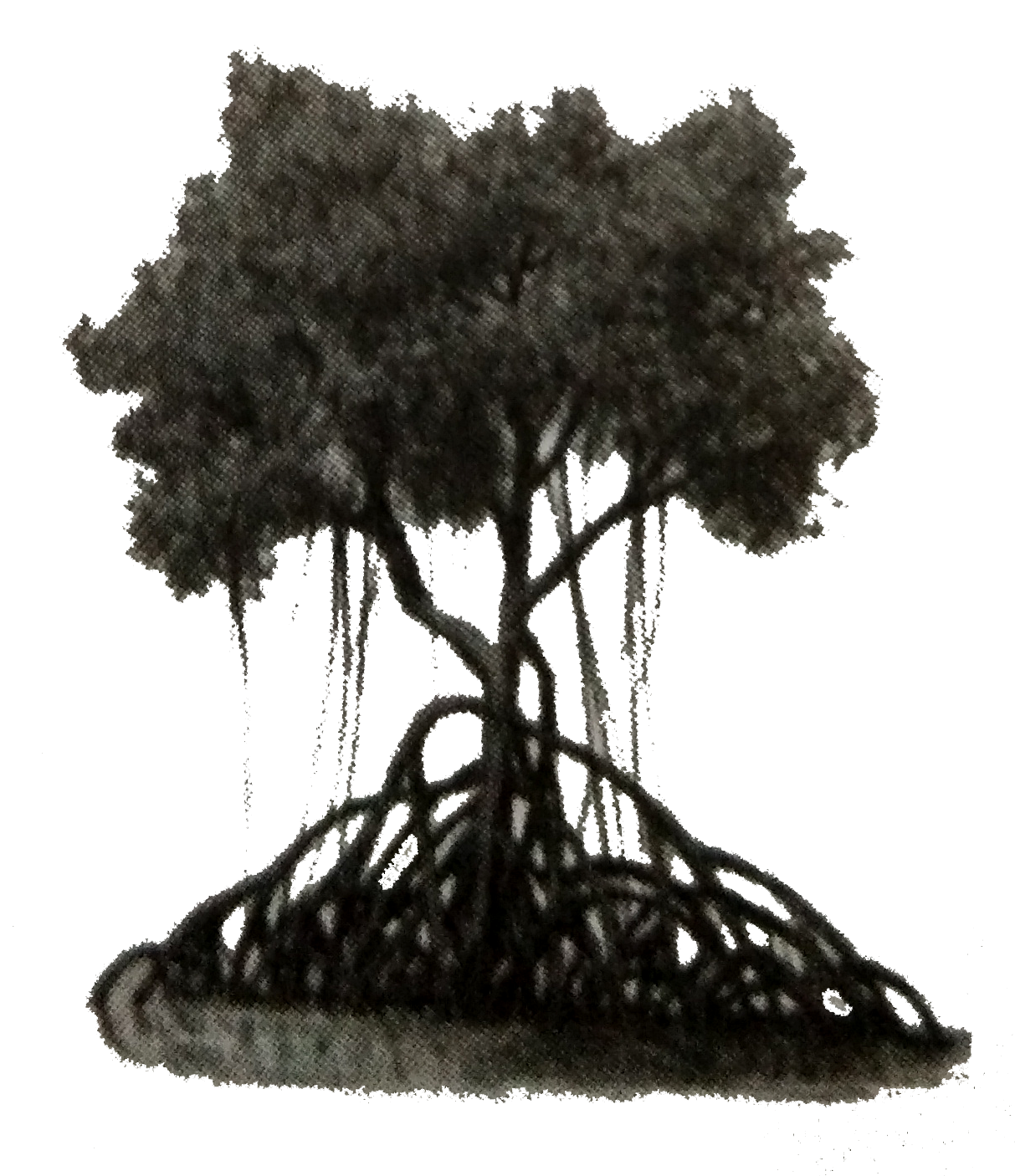In Opuntia, the stem is modified into a flattened green structure to perform the function of leaves (i.e., photosynthesis). Cite some other examples of modifications of plant parts for the purpose of photosynthesis.
To answer the question regarding modifications of plant parts for photosynthesis, we can follow these steps:
1. Understanding the Concept: The question asks for examples of plant parts that have been modified to perform photosynthesis, similar to how the stem of Opuntia is modified into a flattened green structure.
2. Example 1 - Euphorbia:
- In Euphorbia, the stem is modified into a fleshy and cylindrical structure.
- This modification allows the stem to perform photosynthesis due to the presence of chlorophyll, which is essential for capturing sunlight.
3. Example 2 - Acacia:
- In Acacia, the petiole (the stalk that attaches the leaf blade to the stem) is modified.
- The lamina (the flat part of the leaf) is highly reduced, and the petiole takes on a green, flattened form to carry out photosynthesis.
4. Additional Examples:
- Cacti: In many cacti, the stems are modified into thick, fleshy structures that are green and perform photosynthesis, similar to Opuntia.
- Some Succulents: Plants like Aloe vera have modified leaves that are thick and fleshy, allowing them to photosynthesize efficiently while conserving water.
5. Conclusion: These examples illustrate how various plant parts can be modified to perform photosynthesis, adapting to their environments.
- In Euphorbia, the stem is modified into a fleshy and cylindrical structure.
- This modification allows the stem to perform photosynthesis due to the presence of chlorophyll, which is essential for capturing sunlight.
- In Acacia, the petiole (the stalk that attaches the leaf blade to the stem) is modified.
- The lamina (the flat part of the leaf) is highly reduced, and the petiole takes on a green, flattened form to carry out photosynthesis.
- Cacti: In many cacti, the stems are modified into thick, fleshy structures that are green and perform photosynthesis, similar to Opuntia.
- Some Succulents: Plants like Aloe vera have modified leaves that are thick and fleshy, allowing them to photosynthesize efficiently while conserving water.
Topper's Solved these Questions
- MORPHOLOGY OF FLOWERING PLANTS BOOK - ICSECHAPTER - MORPHOLOGY OF FLOWERING PLANTS EXERCISE - Ncert Exercises with Answers
25 Videos
- MORPHOLOGY OF FLOWERING PLANTS BOOK - ICSECHAPTER - MORPHOLOGY OF FLOWERING PLANTS EXERCISE - Ncert Exercises (Differentiate Between )
21 Videos
- MORPHOLOGY OF FLOWERING PLANTS BOOK - ICSECHAPTER - MORPHOLOGY OF FLOWERING PLANTS EXERCISE - Test Your Progress (Short/Long Answer Type Questions )
34 Videos
- MORPHOLOGY AND ANATOMY OF DIFFERENT SYSTEM OF COCKROACH BOOK - ICSECHAPTER - MORPHOLOGY AND ANATOMY OF DIFFERENT SYSTEM OF COCKROACH EXERCISE - Long Answer type Questions
6 Videos
- NEURAL CONTROL AND CO-ORDINATION BOOK - ICSECHAPTER - NEURAL CONTROL AND CO-ORDINATION EXERCISE - NCERT EXERCISES WITH ANSWER (DIFFERENTIATE BETWEEN)
11 Videos
Similar Questions
In Opuntia, the stem is modified into a flattened green structure of perform the function of leaves, (i.e., photosynthesis). Cite some other example of modifications of plant parts for the purpose of photosynthesis.
View SolutionStems modified into flat green organs performing the functions of leaves are known as
View Solution
Knowledge Check
_______are the green stems of limited growth which have taken over the function of photosynthesis form leaves.
APhyllocladesBCladodesCPhyllodesDStem thornsRoots are modified to perform specific functions other than their normal functions.The given figure shows modification of the roots of mangrove plant.Select the incorrect option regarding it.
 AThe stilt roots of red mangrove help in breathingBThe root system is highly entangled, huge and extensive under the water.CA large number of animals such as small fishes, crustaceans, seahorses, etc. find shelter in this root systemDBesides providing mechanical support, these roots also perform photosynthetic functions in the plant.
AThe stilt roots of red mangrove help in breathingBThe root system is highly entangled, huge and extensive under the water.CA large number of animals such as small fishes, crustaceans, seahorses, etc. find shelter in this root systemDBesides providing mechanical support, these roots also perform photosynthetic functions in the plant.
Stems modified into flat green organs performing the functions of leaves are known as
View SolutionStems are modified into flattened structures, which carryout photosynthesis in
View SolutionPhylloclade is modified stem to perform the function of photosynthesis. (True/False)
View SolutionPlant of arid regions that modifies its stem into flattened structure that contains chlorophyll & carries out photosynthesis is
View SolutionYou have heard about several insectivorous plants that feed on insects. Nepenthes or the pitcher plant is one such example, which usually gorws in shallow water or in marsh lands. What part of the plant is modified into a pitcher ? How does this modification help the plant for food even through it can photosynthesise like any other green plant ?
View SolutionIs it correct to say that photosynthesis occurs only in leave of a plant ? Besides leaves, what are the other parts that may be capable of carrying out photosynthesis ? Justify.
View Solution
